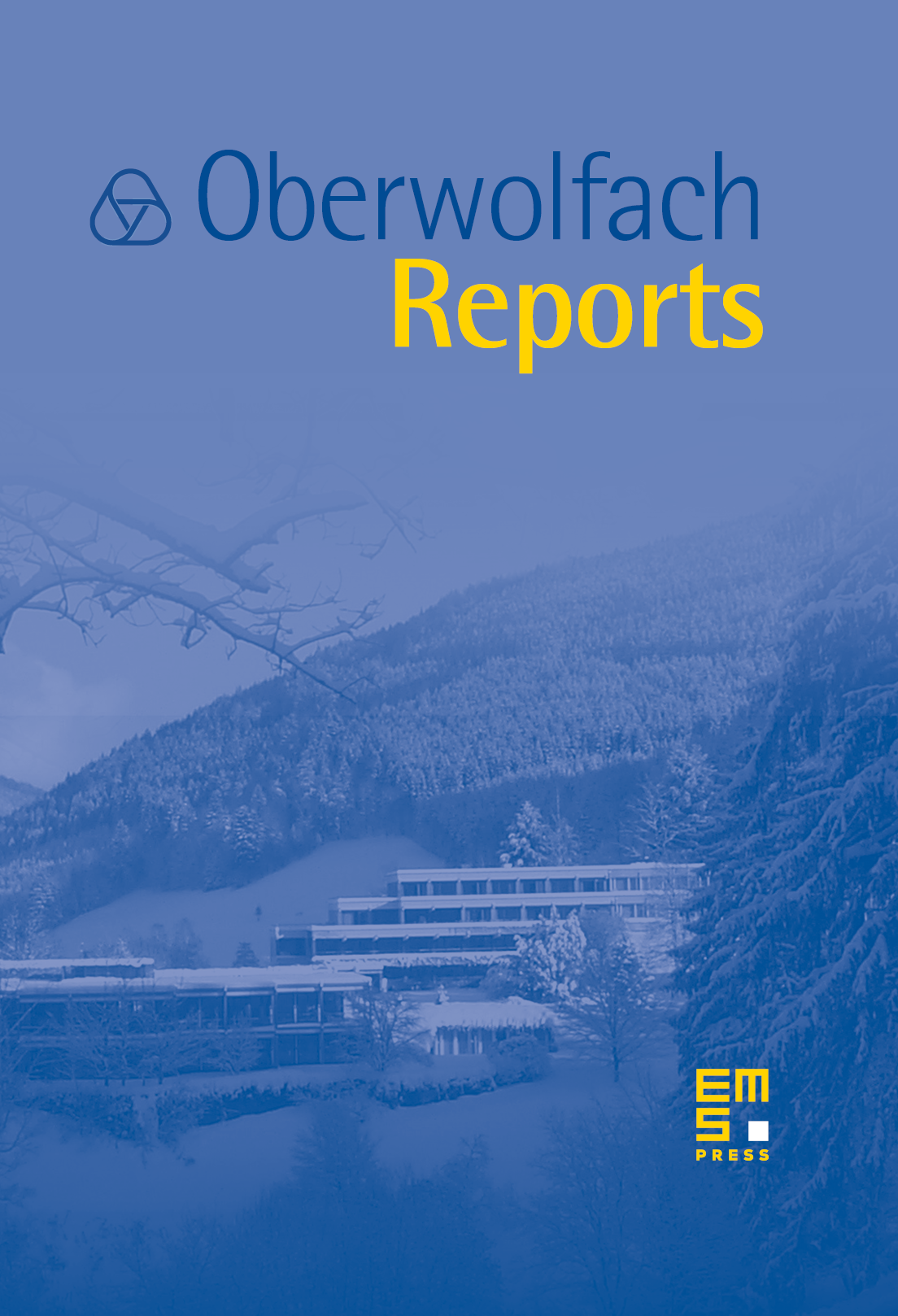Discrete Differential Geometry
Alexander I. Bobenko
Technische Universität Berlin, GermanyRichard Kenyon
Brown University, Providence, USAJohn M. Sullivan
Technische Universität Berlin, GermanyGünter M. Ziegler
Freie Universität Berlin, Germany

Abstract
The workshop Discrete Differential Geometry, organized by Alexander I. Bobenko (Berlin), Richard W. Kenyon (Vancouver), John M. Sullivan (Berlin) and Günter M. Ziegler (Berlin), was held March 5th to March 11th, 2006. The meeting was very well attended, with almost 50 participants, from as far away as Australia and China.
Discrete differential geometry is a new and active mathematical terrain where differential geometry (providing the classical theory for smooth manifolds) and discrete geometry (concerned with polytopes, simplicial complexes, etc.) meet and interact. Problems of discrete differential geometry also naturally appear in (and are relevant for) other areas of mathematics. Moreover, the process of discretizing notions, problems and methods from the smooth theory often brings out new connections and interrelations between different areas.
The workshop at Oberwolfach brought together researchers with a wide variety of backgrounds, including of course discrete geometry and differential geometry, but also integrable systems, combinatorics, mathematical physics and geometry processing. The exchange of ideas among different subfields helped to build new bridges between these mathematical communities.
Discrete differential geometry can be said to have arisen from the observation that when a notion from smooth geometry (such as the notion of a minimal surface) is discretized “properly”, the discrete objects are not merely approximations of the smooth ones, but have special properties of their own which make them form in some sense a coherent entity by themselves. The discrete theory would seem to be the more fundamental one: The smooth theory can always be recovered as a limit, while there seems to be no natural way to predict from the smooth theory which discretizations will have the nicest properties.
One case where these ideas seem particularly well-developed is for geometries described by integrable systems. The notion of a discrete integrable system as given by consistency on a cubic lattice has already shed new light on classical, smooth integrable systems.
Another theme which arose repeatedly during the workshop was that of circle patterns and sphere packings. These can be used to discretize conformal maps, isothermic surfaces, and elastic bending energy.
Since a computer works with discrete representations of data, it is no surprise that many of the applications of discrete differential geometry are found within computer science, particularly in the areas of computational geometry, graphics and geometry processing. The workshop brought theoreticians together with people interested in these and other applications.
Cite this article
Alexander I. Bobenko, Richard Kenyon, John M. Sullivan, Günter M. Ziegler, Discrete Differential Geometry. Oberwolfach Rep. 3 (2006), no. 1, pp. 653–728
DOI 10.4171/OWR/2006/12